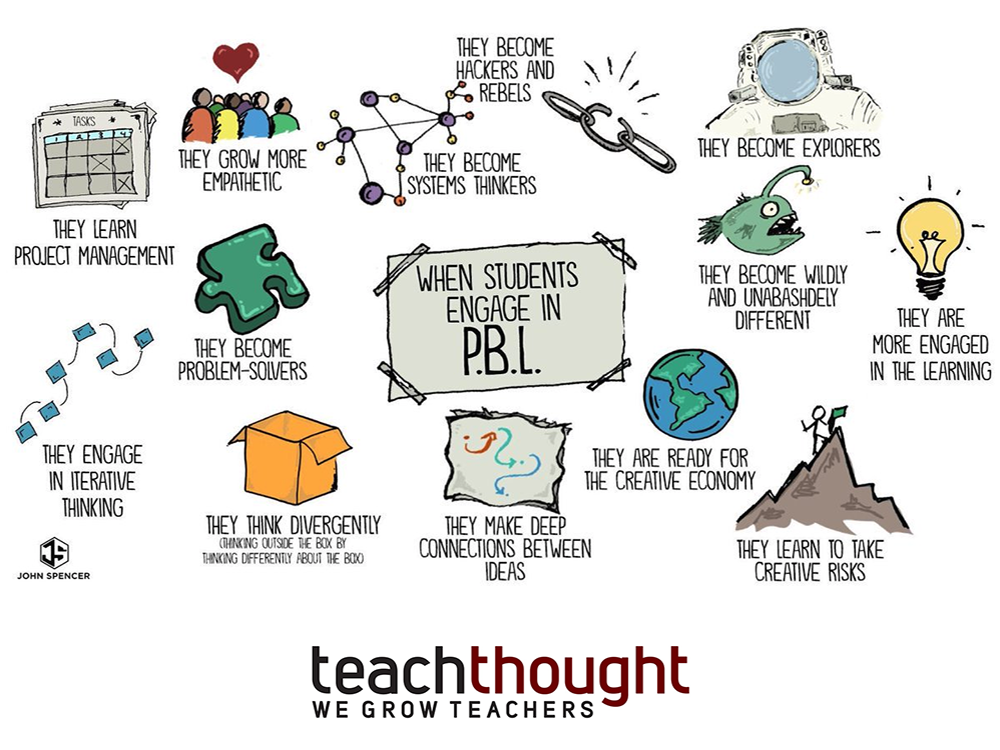
13 Brilliant Benefits of Project-Based Learning [Updated]
by Terry Heick
Project-based learning isn’t about trendy activities or long-term group work. It’s a way to make learning purposeful, connecting knowledge to real-world application. When the design is strong—when goals are clear, audiences are authentic, and student choice is real—the benefits of project-based learning become visible in both engagement and understanding.
At its core, project-based learning means learning through projects. Students explore questions, design solutions, and create products that demonstrate what they know. The project exists to serve the learning goals—not the other way around. Backward design helps ensure every step aligns with meaningful outcomes and standards.
For practical guidance, see 20 Examples of Project-Based Learning , learn how projects unfold across the phases of project-based learning , or review the difference between doing projects and PBL .
The following outcomes—originally adapted from a visual by John Spencer—illustrate 13 specific benefits of project-based learning, along with strategies that help teachers make them real in the classroom.
13 Brilliant Benefits of Project-Based Learning
-
Students learn project management.
Strategy: Use a project management tool such as Trello or Redbooth to help students plan, assign, and track tasks across the project timeline. -
Students develop empathy.
Strategy: Design projects around a real audience and a real need. Purpose and perspective make learning relevant. -
Students learn to challenge systems.
Strategy: Encourage learners to question how current systems work—education, environment, media—and design improvements or alternatives. -
Students think in systems.
Strategy: Use concept maps and cause–effect diagrams to help students visualize complex relationships. -
Students become explorers.
Strategy: Pair local exploration—like community research or field interviews—with digital publication to broaden reach and reflection. -
Students solve real problems.
Strategy: Base each project on a genuine problem that requires investigation, critical thinking, and practical reasoning. -
Students learn to think differently.
Strategy: Celebrate originality. Reward students who take thoughtful risks or develop new approaches that improve the quality of their work. -
Students are more engaged in learning.
Strategy: Establish clear checkpoints and self-assessment opportunities—or better, have students design their own review cycles. -
Students prepare for the creative economy.
Strategy: Allow learners to use authentic tools and personal strengths to produce professional-level products and presentations. -
Students practice iterative thinking.
Strategy: Treat revision as part of learning, not just editing. Require drafts, peer critique, and reflection throughout the project. -
Students think divergently.
Strategy: Model multiple solutions to a single challenge and highlight the creative reasoning behind each approach. -
Students make deep connections between ideas.
Strategy: Build cross-curricular projects that merge disciplines, prompting students to analyze how ideas interact across contexts. -
Students learn to take creative risks.
Strategy: Discuss what healthy risk-taking looks like in learning—scope, audience, media—and allow students to adjust if a risk fails forward.
The Lasting Benefits of Project-Based Learning
Over time, the benefits of project-based learning extend beyond any single project. Students become more thoughtful, independent, and adaptable. Teachers shift from delivering content to designing experiences that connect learning to real purpose—a transformation that endures long after the project is complete.

